
Table of Contents
- Introduction
- Creating a Robust Brand Funnel
- Step-by-step Guide to the Multiple Benefits of Branding and Co-branding
- Advantages of Co-branding
- Disadvantages of Co-branding
- Key Takeaways
- FAQs
We often believe that customers buy from a company just by associating it with its historical significance and goodwill. However, in this age, where marketing dominates our everyday actions, we often fail to notice that our consumer behavior is actually regulated by brands, how well their stories are told and how well those stories connect with us.
The advantages of co-branding and branding are evident from these golden words uttered by the celebrated American storyteller, author, and entrepreneur Jonah Sachs:
“Your brand is a story unfolding across all customer touchpoints.”
A customer might want to engage with your brand by visiting a retail store, stay engrossed when your brand commercial appears on the television set, or hum the brand’s jingle whenever they find it playing through a YouTube ad.
Although these are the tell-tale signs that magnify the benefits of branding, we should not forget that since time immemorial, nature has fashioned us in a way that we can derive strengths and advantages from each other through mutualistic symbiosis. In the modern era, this concept of mutualistic symbiosis has evolved and made its way in the marketing domain as well.

Creating a Robust Brand Funnel
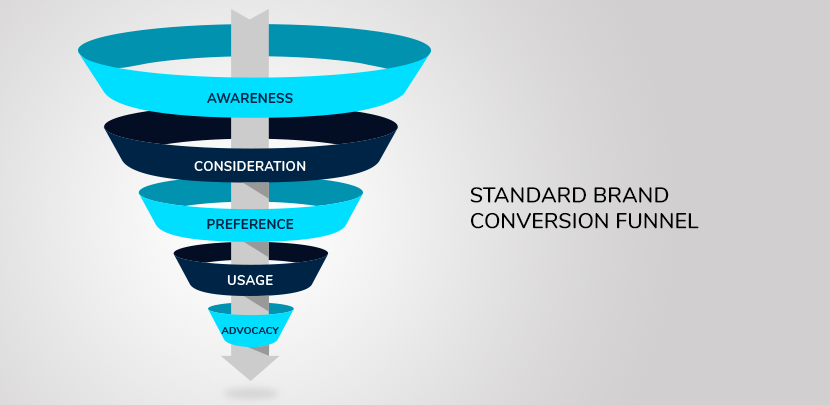
Brand and marketing managers are often invested in educative guesswork driven by data analytics and creative insights to take their product and services campaigns to market. Although it is a common misconception that brand performance is pretty arduous to track, brand managers often take the help of the sketchy tactics above and perform trial-and-error to realize success.
However, the advantages of branding can be easily comprehended by forging a ‘brand funnel’ where a conceptual model is fabricated to represent the consumer-centric journey towards the intended brand loyalty.
The basic components of a foolproof ‘brand funnel’ are:
- Brand awareness: Introducing the brand to its target audience
- Brand consideration: Coaxing and cajoling the conscious customers to consider using the brand
- Brand preference: Influencing the consumers to choose the brand over its competitors
- Brand usage: It usually pertains to the data; how many people are using the brand, their satisfaction, feedback, and usage patterns
- Brand advocacy: If all the above parts of the funnel operate like clockwork, the customers will definitely advocate the brand over its market competitors.
Now that we are acquainted with the intricacies of branding and how brand funnels work, let us exhibit the obvious benefits of branding as a strategic tool.
Step-by-step Guide to the Multiple Benefits of Branding and Co-branding
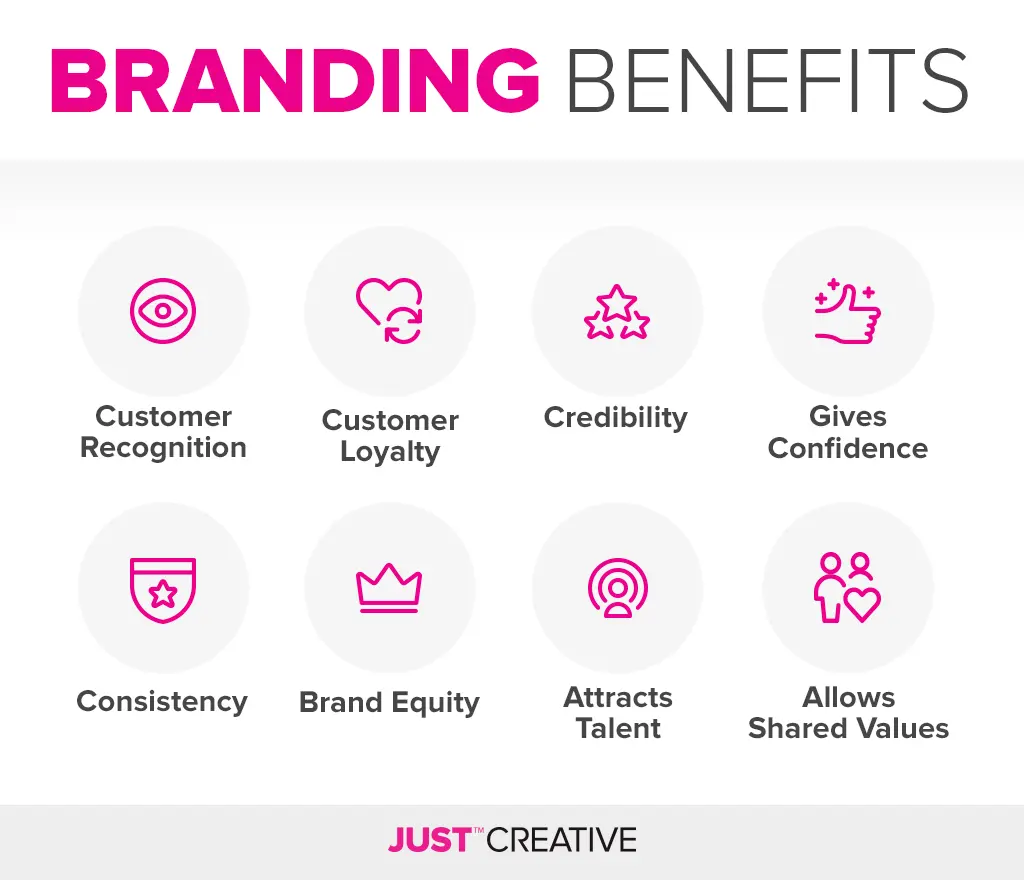
The apparent benefits of branding render their unique products and services to stand out amongst a highly-saturated market and create credibility, inspiring customers to connect with it. The ultimate benefits of branding are to create loyalty and customer retention. It will lead the customers to feel that the brand values them in turn and will provide considerable worth to make their lives seamless.
1. Influences customer purchase decisions
According to a HubSpot marketing survey, more than 89% of consumers have confessed that they tend to purchase their desired products or avail services from brands that they recognize, have a positive experience with prior purchase decisions, and will definitely prefer over their competitors.
2. Portrays a brand story and identity
It is not just the products or services the brand sells; branding is essential to develop a story that connects with people. Developing a brand mission in a specific sector, for example, community development connects with people who believe in the brand. This form of compelling storytelling has an indelible impact on customer retention.
3. Creates a business that is instantly recognizable to its target audience
One of the perks of a robust branding strategy is creating an instantly recognizable business to its target audience. Even if the consumers come across your brand mentions in unconventional channels, they will immediately strike a chord with your brand as the unique content you create stays with them.
Hence, the brand in question can devote more resources to product promotion and marketing rather than building brand awareness, as the consumers have already associated with the brand on a personal level.
For example, Air Jordan sports shoes don’t need to create brand awareness since the legendary personality of Michael Jordan is associated with the product, and that is credible enough for the consumers to have an impeccable experience. Instead, the brand can dish out more compelling products and bring them to market.
4. Helps the business stand out
With more and more businesses claiming that their products are the best in the segment, it is difficult to discern the good from the average. But robust branding sets the business apart from its consumers, even if the market is saturated.
Think about Coca-Cola. We don’t need to compare it with its competitors in the beverage market because this century-old brand has strived for years to create a powerful niche with its distinct taste, look, color palette, and brand voice! This is one of the remarkable benefits of branding.
5. Creates consistency and invigorates marketing efforts
Although several brands these days are catch-all marketing aficionados, it hardly impacts in the long run. Although there could be an initial buzz and increase in website traffic, if the consumers don’t find value in terms of products or services that they are looking for, they won’t stay engaged.
Instead, the benefits of branding lie in creating a ‘fat brand funnel’ – where consumers get their desired products and services throughout the brand funnel. This kind of consistent branding enthuses the business’s marketing efforts and helps it create a range of immersive experiences for the customers to gain more value in the future and stay with the brand till the end of the time.
6. Builds credibility and trust as well as customer loyalty and retention
As discussed earlier, creating a robust brand identity ensures that the customer stays connected with the brand, returns for repeat purchases, and believes in the business’s credibility.
Inconsistency in brand values destroys trust, and you have to understand that ‘trust’ is something hard to come by. So when you establish a ‘pillar of trust’, the customers will identify themselves with your brand values and come back for further purchases.
7. Helps in ‘word-of-mouth’ marketing
Although branding, as a discipline, has increased leaps and bounds and is integrated with the latest technicalities and data analytics to further its reach, it is always the age-old ‘word-of-mouth’ marketing that has retained its efficacy in improving business sales.
Some of the most surprising HubSpot Marketing statistics reveal that:
- Peer-to-peer conversations effectively drive brand trust for more than 39% of the consumers, compared to only 23% who are motivated by paid ads.
- Consumers also believe the word-of-mouth or recommendation of 14% of fellow customers, compared to brand employees.
Therefore, the benefits of branding transcend all the above values and have a more meaningful conversion rate in driving excellence to a business.
Now that we are more or less convinced about the benefits of branding let us shift our focus to its latest peer on the block – co-branding!
Let’s start with a small story.
Remember the legendary face-off between Paul Pogba and Mesut Oezil for the Adidas Predator advertisement in 2017? Both these footballing superstars are ‘brands’ in themselves, and this was a historical example that showcased the advantages of co-branding and the advantages of branding.

It was highly uncertain which iconic football star would sign for Manchester United that season and drive the club to glory. Since Paul Pogba and Mesut Oezil both were ambassadors of the Adidas Predator, this great ad which showcased Pogba’s skills and finally handed the ball at Mesut Oezil’s feet, had created a prolific buzz amongst the worldwide Manchester United fan community!
Yes, Adidas had rightfully pulled off one of the best advertisements displaying the advantages of co-branding and the advantages of branding, with Adidas being the primary brand reaping the hype that resulted from pairing the erstwhile giants – Paul Pogba and Mesut Oezil- brands in their own way!
So let’s take a deep dive and explain the benefits of co-branding that businesses can derive.
Advantages of Co-branding
8. Sharing the intrinsic values of the company
As is evident from the example above, bringing a couple of footballing maestros together was Adidas’s vision of sharing its intrinsic brand value. Its products are preferred not only by those who are masters at the game, but they also introduce a level of flair and finesse that is unprecedented.
These forms of co-branding endeavors help the customers believe in the brand. According to a HubSpot marketing survey, such benefits of co-branding even persuade the customers to spend more than 31% to 50% of their original budget because they believe that they are simply not buying a product but an experience.
9. Introducing new products to market
In 2016, Nike partnered with Apple to dish out the Apple Watch Nike+. According to Apple’s erstwhile CEO Jeff Williams, this innovative co-branding venture was the culmination of sports tracking and Apple’s avant-garde features of a high-end processor, GPS, water-resistance, and every other state-of-the-art characteristics that would benefit an entire community of sports personnel and athletes who are invested in taking their performance to the next level.
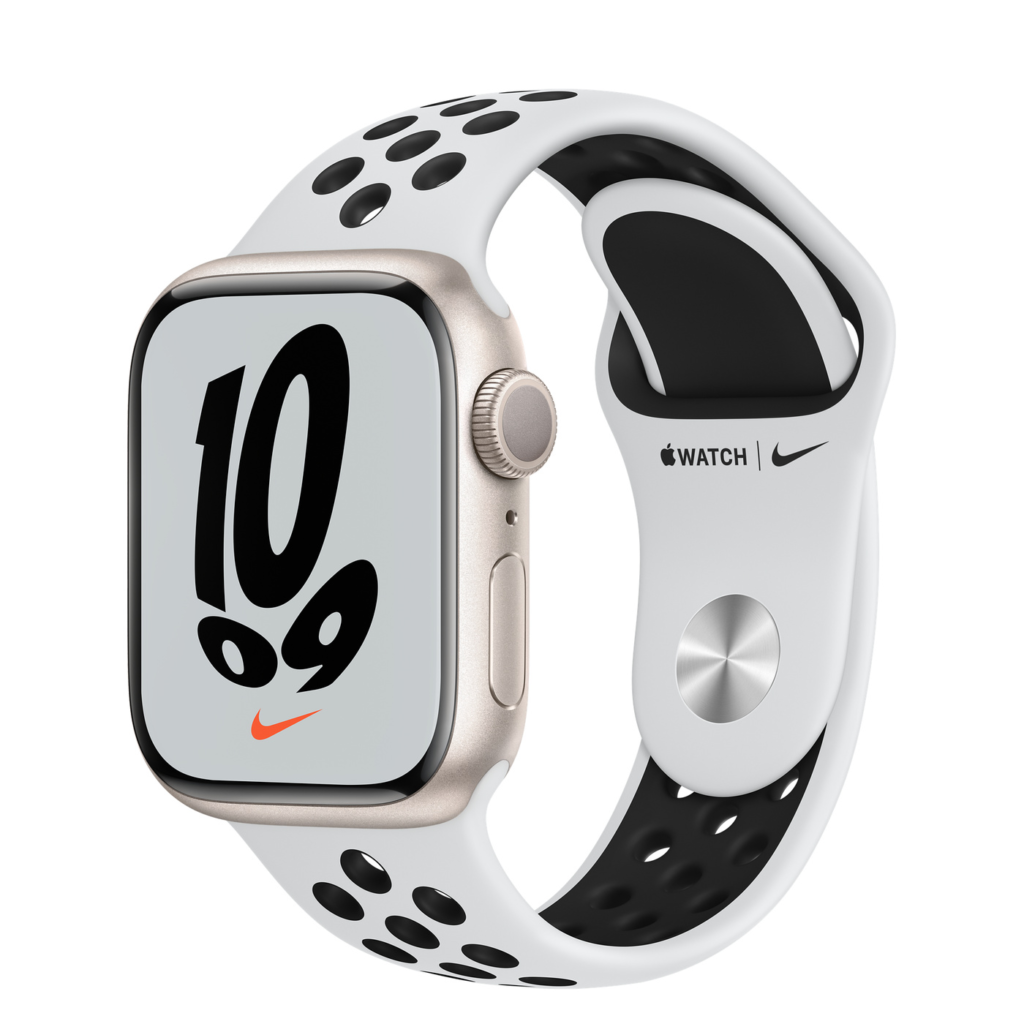
Thus, the benefits of co-branding also lie in helping brands make strategic partnerships by spreading their costs, increasing revenue streams, and reaching new audiences that were previously untapped.
10. Broadening the scope
Every business wants to broaden its scope and tap into previously uncharted consumer markets. One of the biggest examples is the partnership of Boston Consulting Group (BCG) and TED, an impactful non-profit organization dedicated to spreading disruptive ideas to change the way we think or practice.
The benefits of co-branding between these organizations were evident from the world of good they were doing through their TED@BCG events, where they shared curated insights and ideas that keep on disrupting the business sectors and layout the latest roadmaps for businesses of tomorrow with their out-of-the-box storytelling.
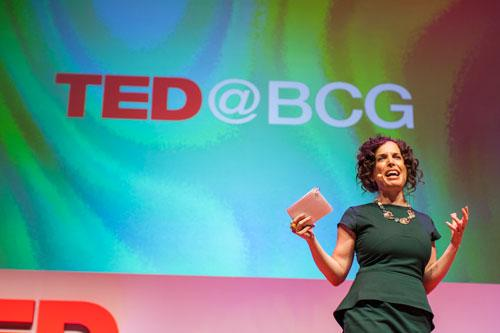
11. Enabling brands to capitalize on their unique strengths and create a disruptive ambiance in tandem
Co-branding has opened avenues for several brands that are pioneers in their own domains to partner with others strategically and deliver products that positively impact their customers. Not only does it help to pool the entire customer base, but it also caters to individual customer touchpoints based on the brands’ forte.
For example, Nike is a sportswear brand focused on providing the ulterior experience in terms of sports practice and fitness. On the other hand, Apple’s technological offerings help you keep track of your choicest playlists music and even monitor the core physiological vitals. Therefore, the advantages of co-branding and branding help create a tailor-made product that taps into the iconic strengths and USPs of each.
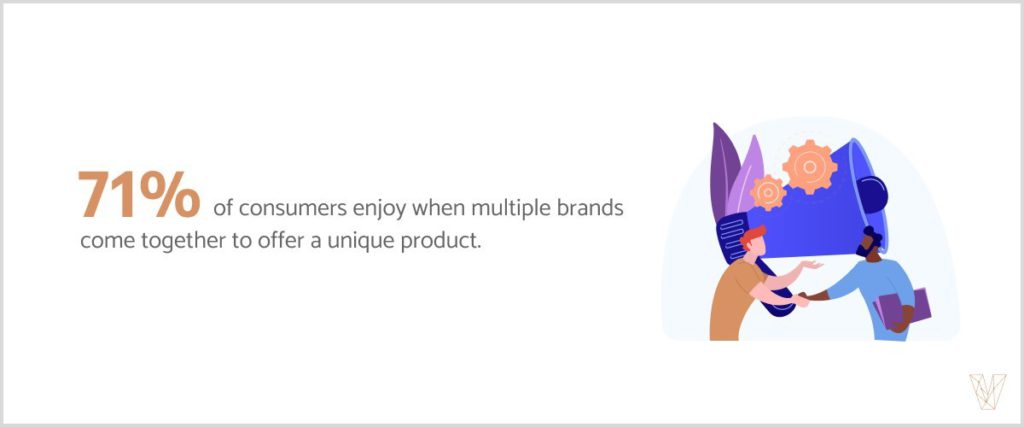
According to a news article by Visual Objects, 71% of the audiences love when their favorite brands come together to offer a unique product.
12. Contributing to a sizeable chunk of revenue
The late 2021 and early 2022 have been heralded as the era of brand partnerships. According to a report by Partnerize, approximately 34% of leading brands and conglomerates have 50 to 99 partners across multiple products and services segments. The primary reason is to tap into those customer spaces that were impenetrable earlier.
In another survey conducted by Partnerize, about 54% of the survey correspondents said that nearly 20% of their total company revenue comes from co-branding endeavors. Most of these survey respondents view co-branding partnerships and affiliate marketing as critical to their long-term success.
13. Amplifying brand equity
It is particularly noticeable when a brand tries to carve its niche and garner following in a sector that anticipates demand. Still, it has to overcome a massive infrastructural and economic roadblock to do the same. However, the solutions offered by co-branding have made things easy.
Let’s consider Starbucks, one of the world’s favorite coffee/beverage chains. Although it had anticipated an immense enthusiasm amongst the new-age Indian consumers, it was not until the co-branding relationship forged with Tata Global Beverages, a subsidiary of Tata Group, that it could set its footing in India. Even then, the co-branding identity was known as Starbucks Coffee ‘A Tata Alliance’. The benefits of co-branding have allowed Indians to taste the fabled coffee with the authenticity of service, possible only in India.

14. Creating sensations
Although the primary motive of branding is to influence the consumer to enter the sales funnel and keep navigating it, co-branding benefits transcend all traditional boundaries and create sensations that can take the world by storm.
According to a Bloomberg report in 2019, the Yeezy Shoe Line, a co-branding endeavor between Adidas and star-rapper Kanye West, saw Adidas’ net annual profit rise by 19.5% to US$1.9 billion in 2019! Suppose you or your brand aims for a meteoric ROI. In that case, the benefits of co-branding can be derived by partnering with celebrities or influencers who are gigantic personal brands themselves.

15. Another top-of-the-line co-branding success story
Google is usually known to be a brand with its own following and does not typically employ co-branding endeavors to hike its popularity. However, the Google Report in 2020 highlighted that the average click share across Google rose by 70% when Estee Lauder, a top US retailer, launched joint Google Ads to promote their brands’ fragrances. They leveraged the power of Google as the top search engine and took their co-branding efforts to new heights.
This only proves that any business, big or small, can leverage the advantages of co-branding and branding. When it comes to startups, the benefits of co-branding with influencers and established concerns are way beyond the typical monetary or social perks that these alliances guarantee.
However, nothing comes without its own set of downsides. And although we have noted the obvious upsides of co-branding, the cons of co-branding also exist.
Disadvantages of Co-branding
- The pros and cons of co-branding can be found in ingredient co-branding. Here, purchasers of the ingredient brands are often more inclined to get their supplies from the more acclaimed brand than the subordinate ones. This might result in strife amongst the co-branding partners.
- However, in composite co-branding, the pros and cons are not visible as both the brands working together are comparatively similar in terms of product quality, services, market reputation, and revenue.
- Composite co-branding is also not without its downsides. The pros and cons of co-branding exist here as well if the brands don’t align in terms of their mission and long-term vision.
- Partner brands might encounter an adverse impact from co-branding strategies if not implemented properly.
- One of the biggest downsides of a co-branding strategy is a weak link in the form of one of the brands. If one of the brands fails to deliver quality products, services, or customer experiences, the entire co-branding strategy might encounter a debacle.
Key Takeaways
- Several consumers prefer companies to market their products together as co-branding initiatives.
- Since many consumers are likely to keep buying from a brand that offers unique products, services, and content, customer loyalty and retention are highly boosted by branding and co-branding efforts.
- Co-branding minimizes the risk amongst partner companies and helps them increase their revenue and customer base.
- The right kind of branding and co-branding initiatives result in brand credibility, offers broadened scope to market, and also technological breakthroughs.
- From creating brand equity to launching sensations, co-branding energizes marketing efforts.
- Co-branding helps weave a unique brand story and share the company’s founding values.
- The right kind of co-branding results in publicity through word-of-mouth.
FAQs
According to industry standards and norms, the different types of co-branding are:
1. Ingredient co-branding
2. Joint-venture or composite co-branding
3. Multiple sponsor co-branding
4. National to local co-branding
5. Same company co-branding
To be successful at co-branding, the entities must have a similar mindset and marketing roadmap. They should also teach similar work cultures, values and cater to the same customer bases. Next comes their offerings. If they provide the desired value to their customers, then co-branding ventures can be highly successful.
Suppose the entities working together can strike a harmony. In that case, co-branding can be one of the most effective and profitable ventures by enhancing their reach, capturing prospective customers, lead generation, and sales.
The most significant objective of co-branding is to develop market awareness. Following this, the co-branding venture should combine their market strength, pool their resources, create positive associations, and compel the customers to purchase their products and services by instilling a sense of brand awareness and brand value in them.
Co-branding is a partnership. But here, it is not necessarily between two or more people. It can be between enterprises, brands, etc., where they share intellectual and physical properties like logos, projects, software, etc.
Latest Blogs
Explore how Google’s 2025 AI search updates triggered ranking chaos. Learn actionable strategies to adapt your SEO for AI Overviews, zero-click searches, and SERP volatility. Stay ahead now.
Learn how to rank on AI search engines like ChatGPT, Perplexity, and Gemini by optimizing your content for authority, structure, and relevance. Stay ahead in AI-driven search with this strategic guide.
Explore the best healthcare SEO services for your medical practice. Improve online visibility and effectively reach more patients in need of your services.
Get your hands on the latest news!
Similar Posts

Branding
10 mins read
What Are Brand Guidelines, and How Do They Work?

Branding
8 mins read
Decoding the Branding Strategy of Patanjali

Branding
7 mins read